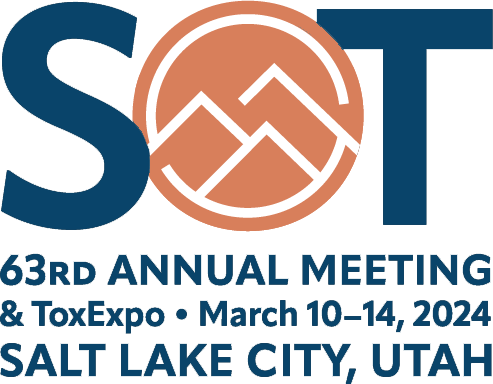At the Society of Toxicology (SOT) 63rd Annual Meeting we heard about the latest and greatest of science and technology in the field of chemical, regulatory, and academia toxicology while attending, platform discussions, informational sessions, poster sessions, Specialty Section presentations, and symposia. Below are the highlights we wanted to share with you.
Machine Learning and AI (Opening Session)
Chris Gibson, PhD, demonstrated how the use of machine learning and Artificial Intelligence (AI) technologies can interface with science to advance drug discovery and development, such as toxicology. This technology represents the potential for a transformative leap forward in the assessment and management of the potential risks and opportunities associated with chemical substances, pharmaceuticals, and environmental contaminants.
Integrating Aggregate Exposure Pathways (AEPs) and Adverse Outcome Pathways (AOPs) for Comprehensive Risk Assessment of Chemical Mixtures
During a workshop session on Integrating Aggregate Exposure Pathways (AEPs), Adverse Outcome Pathways (AOPs) and Adverse Outcome Pathways for Comprehensive Risk Assessment for Chemical Mixtures we learned about the integration of AEP and AOP frameworks for chemical mixtures using a High-Throughput Approach for Mixtures Toxicokinetic Modeling.
The AEP framework focuses on characterizing the routes, sources, and levels of exposure to chemicals in different environmental media and the resulting internal exposures of the chemical and its metabolites. The AOP framework interprets the sequence of key molecular, cellular, and tissue-level events that lead to an adverse health outcome. When linked, these two frameworks can provide a powerful, facilitating, comprehensive, source-to-outcome analyses. By understanding advances in risk assessment including advances in mathematical modeling and using these in the field are important for integrating new or improved techniques to achieve objectives towards chemical risks.
Mechanisms of Per-and Polyfluorinated Substances Action: PPAR-a and Beyond
At the Mechanisms of Per-and Polyfluorinated Substances Action: PPAR-a1 and Beyond symposium session, presenters explored the contribution of peroxisome proliferator active receptor alpha (PPARa), and alternate pathways, to PFAS-induced effects on liver biology and lipid homeostasis.
Microplastics
At the Plastic Chemical Additives: Determining Human Risk from Microplastic Exposure program insights on a new perspective on critical issues toxicologists face when studying microplastics and their potential effects on human health, the importance of understanding how plastics are manufactured, were discussed towards an understanding of the human health risk of microplastics. We heard how modeling probabilistic estimates of both direct exposure (e.g., food packaging) and exposure from modifications to an existing numerical bioaccumulation food web model are being looked at towards that understanding. By estimating risk through a newly developed framework when traditional exposure and toxicity data have not been developed, but the molecular structure and chemical tonnage of a chemical is known, allows for a new perceptive of risks. By evaluating the combination of particle characteristics (e.g., size, shape, polymer type) and the presence of chemical additives in the plastics industry, toxicologists are presented with a sizable issue.
Although there is a vast amount of information available through existing regulatory programs; programs like the US Food and Drug Administration’s food contact notification and the Threshold of Toxicological Concern model, coupled with the European Chemicals Agency REACH registration, there is no existing exposure and toxicological comprehensive data source, scientists can turn to when developing predictions of potential exposures and risks.
Modernization of the Cosmetics Regulation Act (MoCRA)
The Modernization of the Cosmetic Regulation Act: Perspectives on Recent Implementation Activities and Confirming Safety in Cosmetic Products session provided an overview of the Modernization of Cosmetics Regulation Act (MoCRA) from the US Food and Drug Administration (US FDA), including the agency’s latest communications and guidance on compliance with new provisions. Through a discussion on the concept of safety substantiation, touching on resources to use along with approaches and key considerations when assessing the safety of complex or novel ingredients in a cosmetic product, we saw a presentation on new approach methods that can address specific challenges facing cosmetic products and their ingredients in the US and abroad. Understanding the safety substantiation process and evaluating the safety of complex or novel ingredients requires expertise which RHP toxicologists and exposure scientists can provide.

“Range of PFOA Safe Dose: An International Collaboration” Wins SOT – Regulatory and Safety Evaluation Specialty Section (RSESS) Best Paper of the Year Award
RHP’s Frank Pagone, in collaboration with the international collective of twenty-three scientists were winners of the Society of Toxicology’s Regulatory and Safety Evaluation Specialty Section (RSESS) Best Paper of the Year Award by the RSESS Executive Committee for their publication of “Range of PFOA Safe Dose: An International Collaboration”.
Among government agencies, industry, academia and interested parties, the values vary widely on an estimated dose of perfluorooctanoate (PFOA) that would protect human health. This think tank group of scientists were divided into three technical teams to vet, rank, coalesce and synthesize current and cutting edge data from science, medicine, and research sources to independently develop ranges for estimated PFOA safe doses.
The results of this monumental collection of perspectives, knowledge and talent has been published in Regulatory Toxicology and Pharmacology: sciencedirect.com/science/article
About RHP Risk Management
RHP Risk Management is an environmental and occupational health consulting firm of scientists, toxicologists, public health professionals anthropologist and risk assessors that cover practices including environmental engineering, industrial hygiene, exposure science, and human health interaction and risk assessment.
RHP works with clients to develop solutions to their most pressing concerns. Understanding exposures and risks through a grounding in a sound, defensible, state-of-the-art scientific approach gives our clients peace of mind. Empowered by a comprehensive understanding of exposures we can provide, clients with reliable, strong data and tools to recognize unseen business and liability risks, manage known risks and mitigate, target areas for control systems, comply with regulations, and be better braced for regulatory or liability actions.
Ashish Jachak, Ph.D., principal toxicologist at RHP Risk Management Inc.
Frank Pagone, Ph.D., CIH, senior manager at RHP Risk Management Inc.
1PPAR-α, a transcription factor regulated by free fatty acids, is a major regulator of lipid metabolism in the liver and this transcription factor may be activated by perfluorocarboxylic acids but not by perfluorosulfonic acids, both of which are subclasses of per- and polyfluoroalkyl substances (PFASs). Mixtures of PFASs may be linked to increased circulating cholesterol levels and cardiovascular disease risk as a result of alterations in enterohepatic circulation and cholesterol metabolism. Another study investigating alternate mechanisms of PFAS toxicity showed that PFAS induced inhibition and degradation of HFN4ɑ resulting in disruption of lipid homeostasis. This is important since numerous epidemiological studies have linked PFAS exposure to hypercholesterolemia warranting an in-depth investigation of the association between HNF4ɑ and PFAS.

